How to Make Your Ebike Faster – 5 Proven Tips
Did you know that over 1 million electric bikes are sold annually in the United States alone? As their popularity grows, so does the desire to maximize their performance. Many riders are unaware that their ebike’s default settings often limit its potential speed and power. Understanding these limitations and learning how to adjust them can make a significant difference in your riding experience.
In this guide, we’ll explore both hardware and software tweaks to help you unlock your ebike’s full potential. From adjusting speed limiters to upgrading components, we’ll cover practical methods that any enthusiast can apply to enhance their ride. Whether you’re commuting through busy streets or exploring trails, these tips are designed to deliver results.
Table of Contents
Our focus is on providing reliable, tested methods that ensure safety and efficiency. By the end of this article, you’ll be equipped with the knowledge to transform your ebike into a faster, more responsive machine.
Key Takeaways
- Understanding your ebike’s built-in settings can significantly boost performance.
- Simple software adjustments can increase speed and efficiency.
- Upgrading components like tires and motors can enhance overall performance.
- Proper maintenance is crucial for optimizing your ebike’s speed.
- Always follow safety guidelines when modifying your ebike.
Introduction to Boosting Your Ebike’s Performance
Modern electric bikes come with preset settings designed for safety and regulatory compliance. These configurations, while important, often limit the bike’s potential. Understanding these settings is the first step toward unlocking your ebike’s speed and efficiency.
Fastest Electric Bikes vs Gas-Powered Bikes: Which Is Better?
Understanding Your Ebike’s Default Settings: How to Make Your Ebike Faster
Manufacturers set default settings to ensure rider safety and comply with regulations. These include speed limits, battery performance, and motor output. While these settings are helpful, they can be adjusted to enhance performance.
Identifying Areas for Improvement
Common areas for adjustment include speed limits, battery settings, and motor configurations. Tweaking these can significantly boost your ebike’s speed. For example, adjusting the speed limiter or optimizing battery performance can make a noticeable difference.
Knowing your ebike’s baseline configuration helps in making informed modifications. Always consider safety and legal restrictions when making changes. By identifying these areas, you can unlock additional speed and improve your riding experience.
Optimizing Battery and Motor Power
When it comes to enhancing your e-bike’s performance, the battery and motor are the heart of the system. Upgrading these components can significantly boost your bike’s speed and efficiency. Let’s explore how to optimize them for better performance.
Upgrading to a Higher Voltage Battery
A higher voltage battery can deliver more power to your motor, resulting in increased speed. For instance, upgrading from a 36V to a 48V system can make a noticeable difference. Always check if your motor supports the higher voltage to avoid damage. Many modern e-bikes, like the Hiboy models, are compatible with such upgrades.
Before upgrading, ensure your motor can handle the increased voltage. Higher voltage systems provide better performance, especially on inclines, by maintaining consistent power output.
Breaking Speed Records: The Fastest Electric Bikes in 2025
Enhancing Motor Efficiency for Increased RPM
A more efficient motor can handle higher RPM, leading to a faster ride. Look for motors with improved windings and reduced friction. Upgrading to a high-efficiency motor ensures higher RPM without compromising longevity.
Matching your battery’s voltage and capacity with your motor is crucial. Mismatched components can lead to poor performance or even damage. Always verify compatibility before making any changes.
Professional consultation is recommended before modifying your e-bike’s hardware. Experts can guide you through the process safely and effectively, ensuring optimal performance without risks.
How to Make Your Ebike Faster: Proven Techniques
Electric bikes are designed with preset speed limiters to comply with safety and legal standards. These settings can often be adjusted to unlock higher speeds, offering a more dynamic riding experience.
Adjusting Internal Settings and Speed Limiters
Most ebikes come with built-in speed limiters that cap your top speed. By understanding and adjusting these settings, you can potentially increase your bike’s performance. This process may involve software modifications or physical adjustments, depending on your ebike model.
| Method | Benefits | Considerations |
|---|---|---|
| Software Tuning | Adjusts speed limiters via software; easy to implement | May void warranty; requires technical knowledge |
| Hardware Modifications | Physical changes for higher top speed; more permanent solution | Risk of damaging components; complex installation |
| Using Tuning Kits | Pre-configured kits for safe adjustments; user-friendly | Additional cost; compatibility issues possible |
To safely increase your ebike’s top speed, consider the following steps:
- Research your ebike’s specific model to understand its limitations and potential.
- Use reputable tuning kits or software to adjust settings carefully.
- Test modifications in a safe, controlled environment to ensure stability.
Always prioritize safety and legal compliance when modifying your ebike. Consulting with a professional can help you achieve the desired performance without risks. Remember, small adjustments can lead to significant improvements in your riding experience.
Fine-Tuning Tires and Rolling Resistance: How to Make Your Ebike Faster
Your e-bike’s tires play a crucial role in determining its speed and overall performance. Proper tire setup can significantly reduce rolling resistance, allowing your bike to glide more efficiently. This section explores how optimizing your tires can make a noticeable difference in your riding experience.
Adjusting Tire Pressure for Optimal Performance
Maintaining the correct tire pressure is essential for minimizing rolling resistance. Underinflated tires create more friction, slowing you down and draining your battery faster. Ensure your tires are inflated to the recommended pressure, which can usually be found on the tire’s sidewall. Higher pressure reduces rolling resistance, leading to higher speeds and better energy efficiency.
Choosing the Right Tire Type for Speed
The type of tire you use can greatly impact your e-bike’s performance. Slick tires with minimal tread are ideal for paved roads, as they reduce rolling resistance and allow for smoother rides. Knobby tires, with their aggressive tread patterns, are better suited for off-road terrain but may slow you down on smooth surfaces. Selecting the right tire type tailored to your riding environment can enhance your bike’s speed and responsiveness.
Regularly monitoring and adjusting your tire pressure based on terrain and riding style is crucial. For instance, lower pressure may be better for traction on loose surfaces, while higher pressure excels on smooth roads. This balance ensures optimal performance and efficiency.
Air retention is another critical factor. High-quality tires with excellent air retention capabilities maintain their pressure longer, providing consistent performance over extended distances. This consistency translates to smoother rides and better speed maintenance, especially during long commutes or adventures.
Selecting the right wheel and tire combination can also have a measurable impact on performance. Wider rims with aerodynamic designs reduce air resistance, while lightweight wheels enhance acceleration. Pairing these with the appropriate tire type ensures your e-bike operates at its full potential, delivering the speed and responsiveness you desire.
Small adjustments to your tire setup can lead to significant improvements in both acceleration and handling. By optimizing tire pressure, selecting the right tire type, and ensuring proper air retention, you can unlock your e-bike’s true speed potential. These tweaks not only enhance performance but also contribute to a more enjoyable and efficient riding experience.
Enhancing Aerodynamics and Riding Posture
Optimizing your riding posture and minimizing air resistance can significantly enhance your electric bike’s efficiency and speed. By adopting a streamlined position and using aerodynamic accessories, you can reduce drag while maintaining control and safety.
Streamlining Your Body Position
Aerodynamic efficiency starts with your posture. Lowering your handlebars and tucking your elbows can reduce wind resistance. This position shields your body from headwinds, allowing you to ride faster with less effort. Professional cyclists often use this technique to gain a competitive edge.
Minimizing Air Resistance with Accessories
Accessories like aerodynamic handlebars and wheel covers can complement your bike’s design. These designs reduce drag without compromising safety. Even small adjustments, such as upgrading to a more streamlined saddle, can lead to noticeable improvements in your ride performance.
By balancing a low-drag profile with safety, you can enjoy a more efficient and enjoyable ride. Remember, even minor posture adjustments can lead to significant performance improvements, making your electric bike a faster and more responsive vehicle.
Fastest Electric Bikes with Pedal Assist: Best Hybrid Options
Additional Modifications for Maximum Speed
For enthusiasts seeking every last bit of performance, additional modifications can unlock further potential. Beyond the tweaks already discussed, mechanical and electronic upgrades can refine your bike’s capabilities, ensuring it operates at peak efficiency.
Upgrading Drivetrain Components
A key area for improvement is the drivetrain. Upgrading components like chainrings and cassettes can reduce mechanical resistance, leading to smoother power delivery. For instance, switching to a higher-quality chain or optimizing gear ratios can minimize energy loss and maximize speed. Enthusiasts have reported noticeable improvements by upgrading to lightweight, high-efficiency drivetrain components.
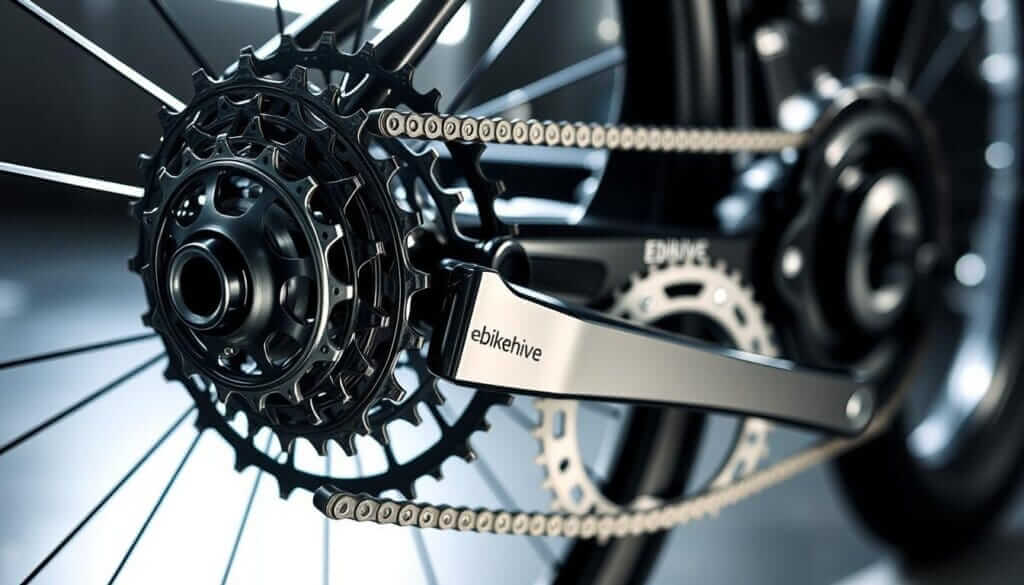
Implementing Advanced Electronic Settings
Electronic settings play a crucial role in fine-tuning your bike’s performance. Adjusting parameters like pedal assist sensitivity and torque mapping can enhance power delivery, making your ride faster and more responsive. Case studies show that calibrating these settings can optimize energy use, leading to improved speed without compromising battery life.
While these modifications can significantly boost performance, they should be approached with care. It’s essential to balance upgrades with the bike’s long-term durability. Consulting a professional ensures that modifications are done safely and effectively, avoiding potential damage and maintaining your bike’s reliability.
FAQ
What role does tire pressure play in improving e-bike speed?
Can upgrading the battery increase my e-bike’s speed?
How does motor efficiency impact my e-bike’s performance?
What are the benefits of reducing weight on my e-bike?
Does adjusting my riding posture affect speed?
Can I override the speed limiter on my e-bike?
How does pedal assist mode affect my e-bike’s performance?
What impact does tire type have on speed?
Does charging my battery fully improve performance?
How can I reduce rolling resistance for faster rides?
Are there safety considerations when modifying my e-bike for speed?
Conclusion
Don’t forget the importance of proper tire pressure and aerodynamic accessories. These simple adjustments can significantly reduce rolling resistance and air drag, allowing you to glide more efficiently. Whether you’re cruising on paved roads or tackling off-road trails, these tips will help you enjoy a faster, more exhilarating experience.
Unlocking your e-bike’s full potential is a rewarding journey that combines thoughtful adjustments and practical knowledge. By focusing on key areas such as battery optimization, tire maintenance, and ergonomic posture, you can achieve a smoother, more efficient ride.
Remember, safety and legal compliance should always come first. Even small tweaks, like adjusting your handlebar position or fine-tuning your pedal assist settings, can lead to noticeable improvements in speed and responsiveness. Regular maintenance, such as keeping your battery fully charged and reducing unnecessary weight, ensures your e-bike performs at its best on any road or surface.
Take the next step and apply these proven techniques to your e-bike. With careful tuning and a focus on safety, you can unlock higher speeds and a more enjoyable ride. Happy cycling!

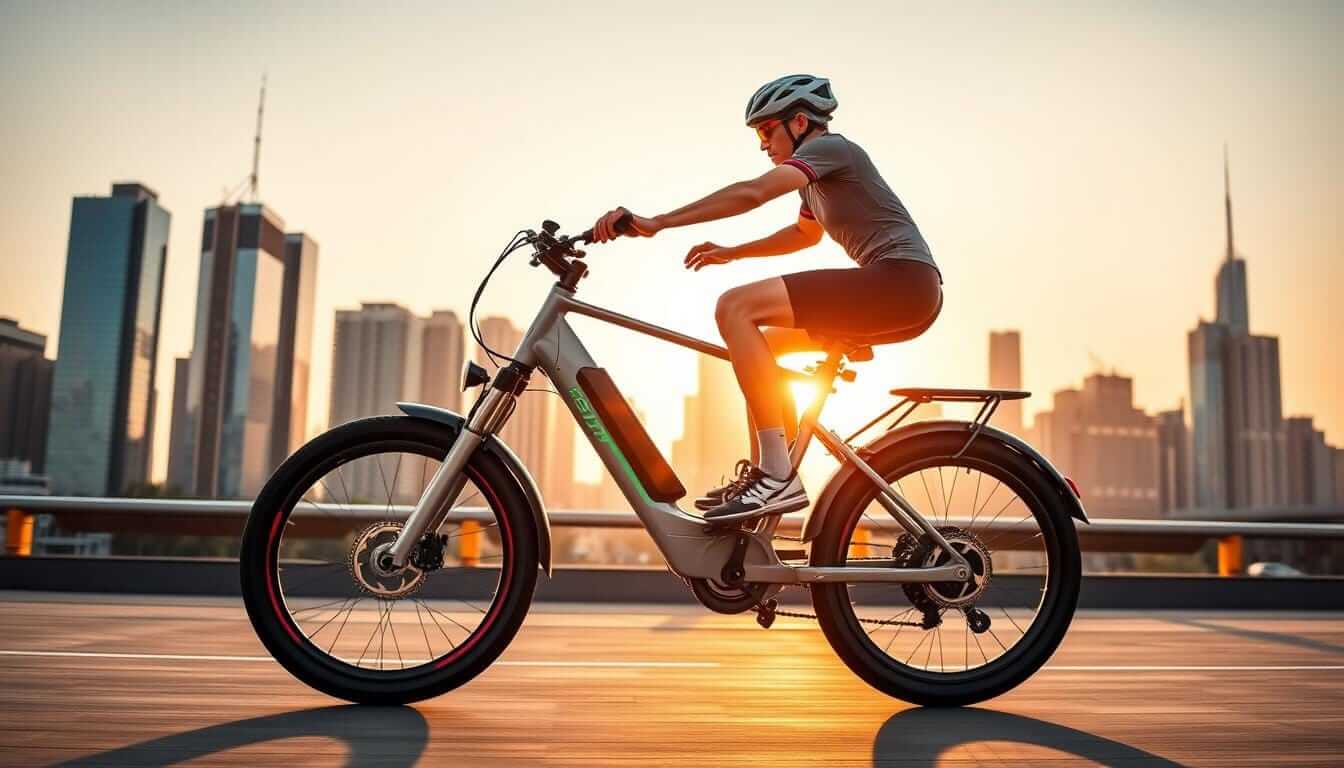
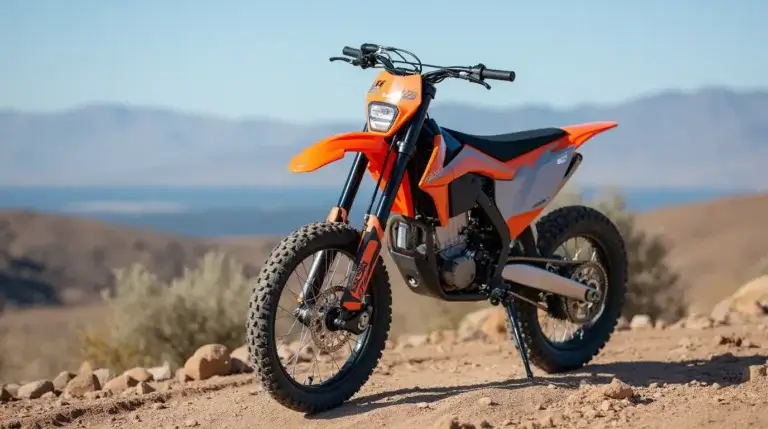

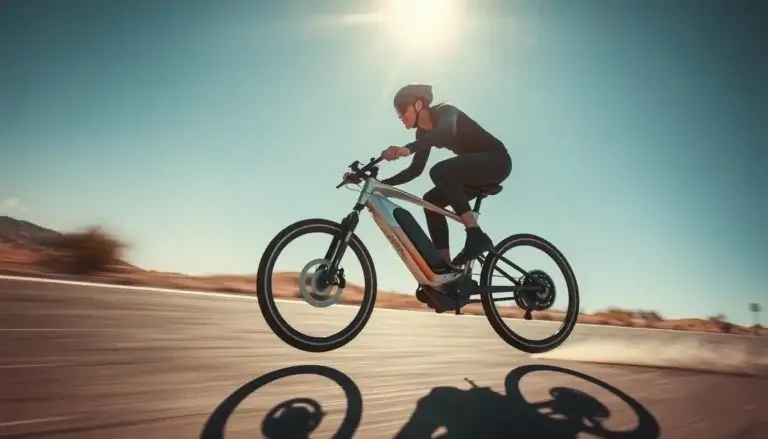

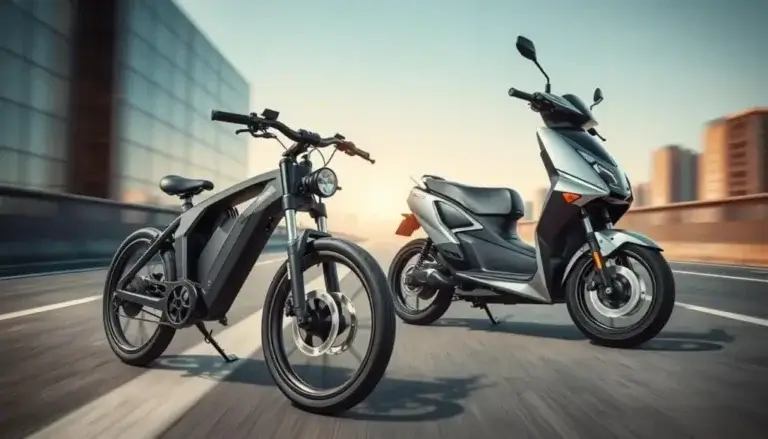

One Comment
Comments are closed.